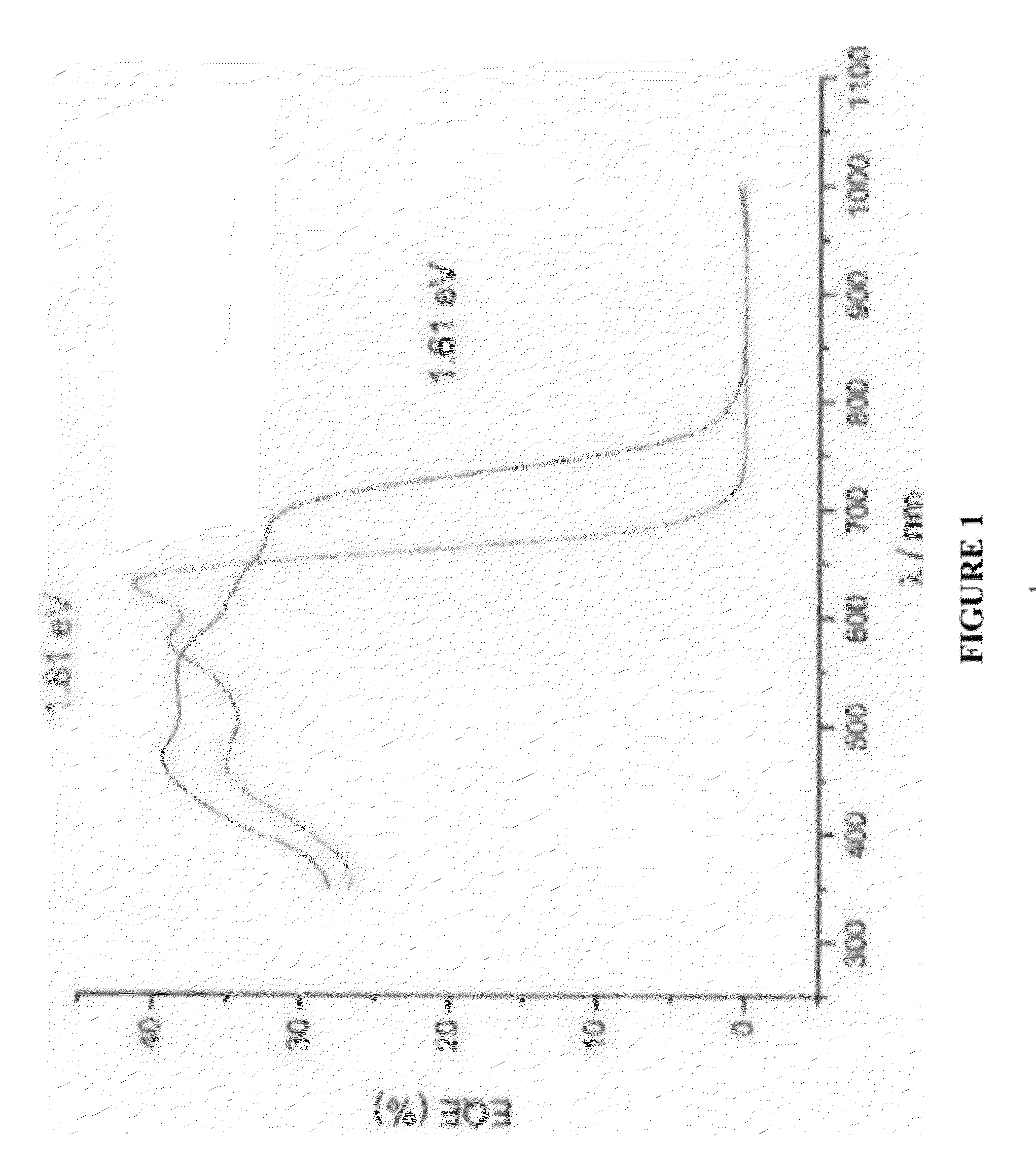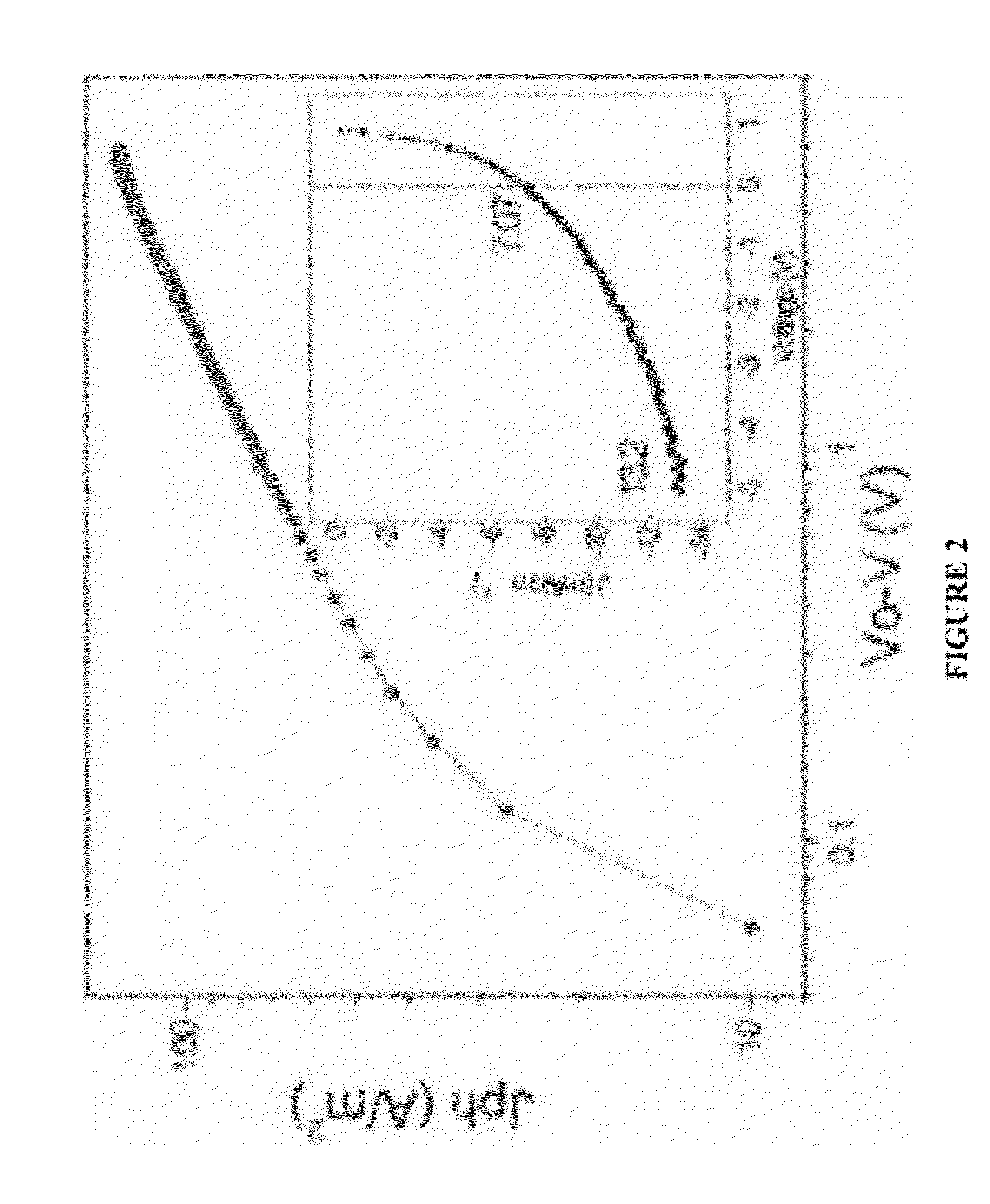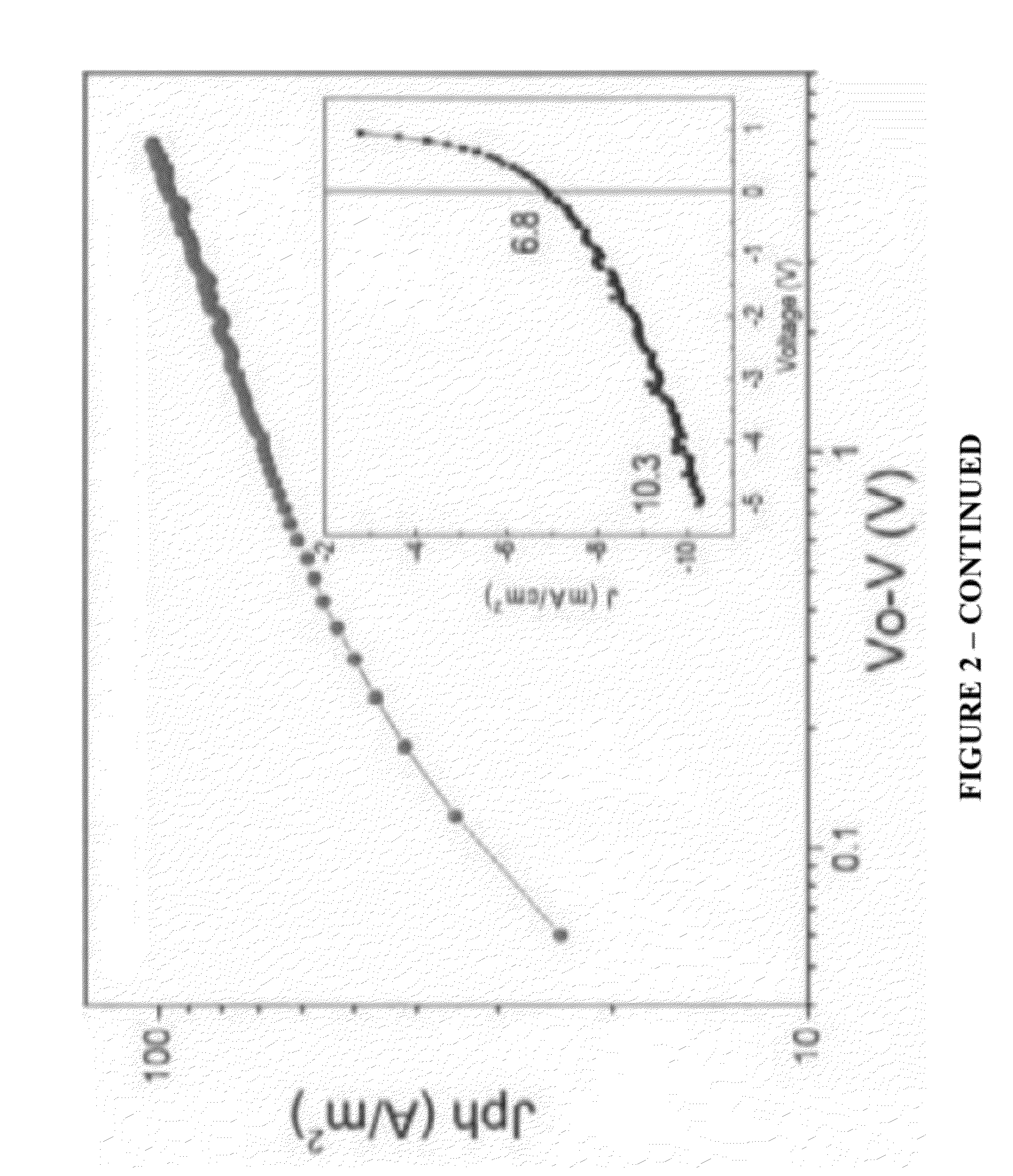Organic electronic devices, including organic photovoltaic devices, polymers, and monomers
a technology of electronic devices and organic photovoltaic devices, applied in the field of organic electronic devices, including organic photovoltaic devices, polymers, and monomers, can solve the problems of sacrificing one, difficult to achieve the combination of properties, etc., and achieve high efficiency photovoltaic devices, good matching, and high mobility polymers.
- Summary
- Abstract
- Description
- Claims
- Application Information
AI Technical Summary
Benefits of technology
Problems solved by technology
Method used
Image
Examples
working examples
PART III. WORKING EXAMPLES
Method 1:
Example 1
Synthesis of 2,5-bis(trimethylstannyl)thieno[3,2-b]thiophene
[0161]
[0162]In a 3-neck round bottom flask equipped with an argon inlet and an addition funnel, thieno[3,2-b]thiophene (7.5 g, 54 mmol) was dissolved in tetrahydrofuran (1 L). After the solution was cooled to −78° C. using an isopropanol / dry ice bath, t-BuLi (100 mL, 170 mmol) was transferred by cannula to the addition funnel. The organolithium reagent was then added dropwise. After completion of the addition, the mixture was stirred for 20 min at −78° C. then warmed up with an isopropanol bath at room temperature for 30 minutes during which a yellow precipitate formed. The solution was cooled back at −78° C., and after cannula transfer to the addition funnel, trimethyltin chloride (200 mL of 1 M solution in THF, 200 mmol) was added dropwise. During addition of trimethyltin chloride, the precipitate disappeared and the solution turned light brown. After warming to room temperatur...
example 2
Synthesis of methyl 2-bromothiophene-3-carboxylate
[0163]
[0164]Thiophene-2-bromo-3-carboxylic acid (10 g, 45 mmol) was placed in a dry 3-neck round bottom flask equipped with an argon inlet and a water condenser. Dry methanol (100 mL) was added to the flask along with a catalytic amount of cc. sulfuric acid (1 mL). The reaction completion was determined by NMR analysis. When complete, the reaction was cooled to room temperature. The methanol was evaporated and the resulting product was purified via column chromatography, using a 100% hexane to 60% hexane / 40% ethyl acetate gradient to yield a slightly yellow clear oil (9 g, 91%).
[0165]Spectral data: 1H NMR (CDCl3, 300 MHz): δH 3.89 (s, 3H), 7.23 (d, 5.76), 7.36 (d, 5.78 Hz).
[0166]13C NMR (CDCl3, 75 MHz): δ 52.13, 120.15, 126.09, 129.48, 131.07, 162.61.
example 3
Synthesis of dimethyl 2,2′-(thieno[3,2-b]thiophene-2,5-diyl)bis(thiophene-3-carboxylate)
[0167]
[0168]In a glove box, 2,5-bis(trimethylstannyl)thieno[3,2-b]thiophene (2.67 g, 5.7 mmol), methyl 2-bromothiophene-3-carboxylate (2.5 g, 11.31 mmol), Pd2dba3 (131 mg, 0.14 mmol) and P(o-tolyl)3 (174 mg, 0.57 mmol) were charged in a Schlenk flask. The flask was connected to an argon / vacuum line and its side arm was purged 5 times before the flask was open to argon. Toluene (100 mL, purged overnight with argon) was added and the mixture was purged five times with vacuum argon cycles. The flask was placed in a preheated bath at 110° C. and the mixture was stirred overnight. Over time a yellow-green precipitate formed. After cooling, the precipitate was filtered and washed with hexane. NMR analysis indicated product was pure (2 g, 42%) and as a result it was used without further purification.
[0169]Spectral data: 1H NMR (CDCl3, 300 MHz): δH 3.85 (s, 6H), 7.25 (d, 2H, 5.46Hz), 7.51 (d, 2H, 5.39 Hz...
PUM
| Property | Measurement | Unit |
|---|---|---|
| Solubility | aaaaa | aaaaa |
| Solubility | aaaaa | aaaaa |
| thickness | aaaaa | aaaaa |
Abstract
Description
Claims
Application Information
 Login to View More
Login to View More - R&D
- Intellectual Property
- Life Sciences
- Materials
- Tech Scout
- Unparalleled Data Quality
- Higher Quality Content
- 60% Fewer Hallucinations
Browse by: Latest US Patents, China's latest patents, Technical Efficacy Thesaurus, Application Domain, Technology Topic, Popular Technical Reports.
© 2025 PatSnap. All rights reserved.Legal|Privacy policy|Modern Slavery Act Transparency Statement|Sitemap|About US| Contact US: help@patsnap.com



